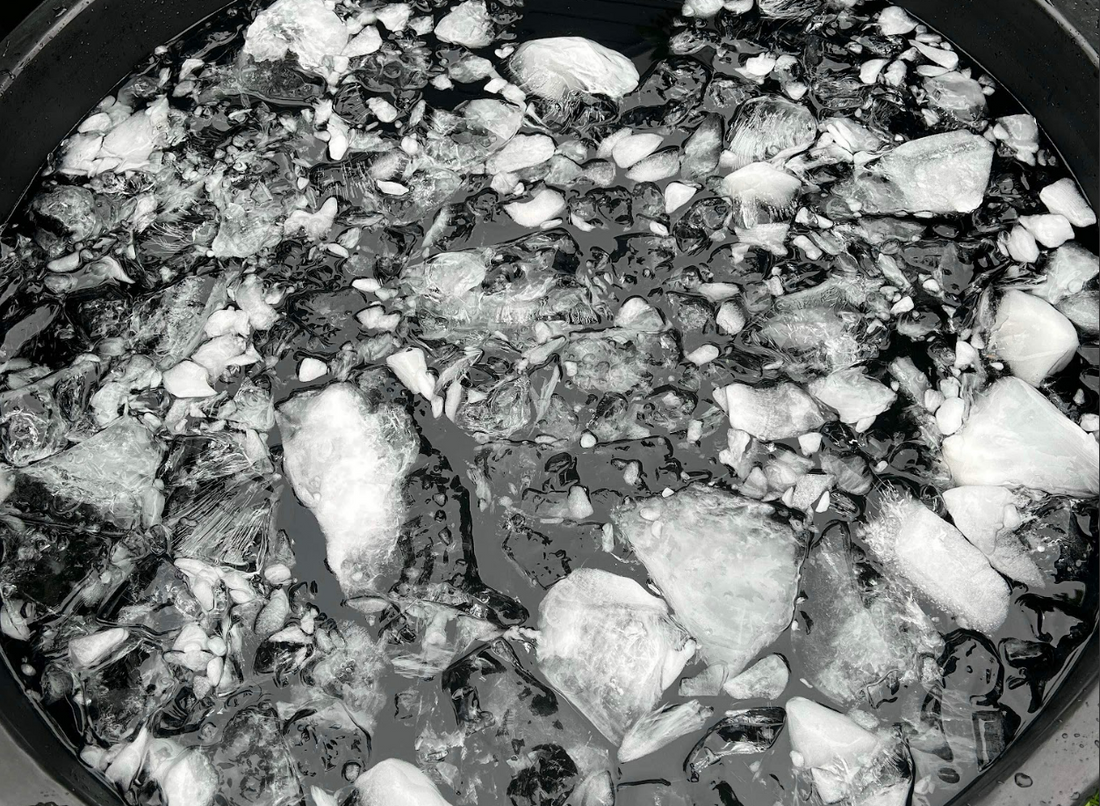
How to Prepare Your Ice Bath Setup for Winter: Essential Steps for a Damage-Free Season
Share
As winter approaches, it’s essential to prepare your ice bath setup for the colder months. Whether you’re using your ice bath regularly or storing it during the freezing temperatures, ensuring proper care and maintenance of the water chiller can save you from costly repairs and extend the life of your equipment. This guide will walk you through step-by-step instructions for winterizing your water chiller, focusing on securing your chiller, emptying the system, and taking critical precautions to avoid damage caused by freezing water.
Why winterizing your water chiller is crucial
Winter is tough on any equipment that uses water. Without proper care, freezing temperatures can lead to mechanical failure and expensive repairs. One of the most common and avoidable issues is water left inside the system freezing, which can cause severe damage to your ice bath's chiller.
In Quebec and other regions that face harsh winters, this is a real concern, so let’s dive into how to avoid this problem and make sure your ice bath setup is ready for the cold months ahead.
Step-by-step guide to winterizing your ice bath setup
Winterizing your ice bath involves disconnecting the chiller, draining all components, and ensuring that no water is left in the system that could freeze and cause mechanical damage. Here are the detailed steps:
1. Turn off and disconnect the chiller
The first step is to turn off the chiller completely. This ensures that there is no risk of running the equipment while you prepare it for winter storage.
- Unplug the chiller from the power source: Make sure the power to the chiller is off before you start handling any hoses or plugs.
- Disconnect the hoses: Carefully disconnect the hoses from the chiller and the ice bath itself. This will allow water to drain more easily. Don’t yank them off—take your time to avoid damage to the connections.
2. Place plugs on the ice bath
After disconnecting the hoses, you need to place protective plugs on the ice bath. These plugs will prevent water from going out of the tub.
3. Drain the chiller thoroughly
Next comes one of the most critical steps: draining your chiller completely. Any leftover water in the chiller can freeze during the winter and cause the internal components to crack or malfunction.
- Tip the chiller: Tilt the chiller on its side to let as much water as possible escape. Keep tilting it at different angles until no more water drips out.
- Move gently: Move the chiller a bit while it’s tipped can help dislodge any water trapped in internal parts.
4. Inspect for leftover water
Even after draining, some residual water might remain in your chiller. This leftover moisture is enough to freeze and damage the unit, so it’s essential to remove as much as possible.
- Use compressed air: If possible, use a compressed air blower to force out any trapped water. This is particularly useful for removing water from hoses and small, hard-to-reach areas.
- Leave the chiller in a warm, dry place: Before storage, leave the chiller in a warm room or garage for a few days to ensure that any remaining water evaporates. Wipe the outside down to remove any condensation or moisture.
5. Store the chiller properly
Once the chiller is completely drained and dry, it’s time to store it. This is a crucial step to avoid water freezing inside the system, which can lead to catastrophic mechanical damage.
- Do not store it outside or in an unheated shed: If the chiller is left in a place where temperatures drop below freezing, even small amounts of residual water inside could freeze and cause cracking or internal damage.
- Store in a climate-controlled area: The best place to store the chiller is in a heated garage, basement, or any room where the temperature stays above freezing throughout the winter.
- Cover it for dust protection: Place a cover or tarp over the chiller to protect it from dust and debris while it’s in storage.
Critical warning: avoid freezing water at all costs
Freezing water inside your system can lead to severe mechanical failure. Here’s why: when water freezes, it expands. This expansion can crack hoses, damage the internal components of your chiller, and even cause structural damage to your ice bath itself. In short, any water left inside the system can lead to costly repairs or even force you to replace parts entirely.
Avoid storing your chiller outside or in a shed where freezing temperatures are a concern. Even if you think you’ve drained all the water, freezing temperatures can cause condensation or small amounts of trapped water to freeze, which may still result in damage.
Bonus tip: maintaining the ice bath itself for winter
Even though your chiller is your main concern, don’t forget about the ice bath itself! It’s essential to ensure your ice bath remains in excellent condition throughout the colder months:
- Clean the bath thoroughly before winter: Use mild soap and water to scrub the inside and outside of the bath. Removing any debris or build-up now will make it easier to set up again when the temperatures warm up.
- Cover the ice bath securely: Use the insulated cover that comes with your Eternal Ice bath. If you don’t have one, invest in a high-quality cover that fits securely over your bath. This will prevent any moisture, leaves, or other debris from getting inside.
- Use your Eternal Ice De-Icer: Install your de-icer so you can avoid having ice building up too much with very cold outdoor temperature.
Frequently asked questions about winterizing your ice bath setup
Q: What happens if I leave water in the chiller or hoses?
A: If any water is left in the chiller or hoses, it can freeze and expand, causing cracks or damage to the internal components. This can result in costly repairs or even the need for a complete replacement.
Q: Can I store my chiller in a shed or outside?
A: No, storing the chiller in a place where temperatures drop below freezing is highly risky. The residual water inside could freeze, leading to mechanical damage. Always store it in a climate-controlled area.
Q: Do I need to clean the ice bath before using it for winter?
A: Yes! Cleaning the ice bath before storage ensures that no dirt, algae, or debris hardens over the winter, which will help water stay clean in winter.
Q: How long does it take to winterize the chiller setup?
A: Winterizing your ice bath setup should take about 30-45 minutes, depending on how thorough you are in draining the system and cleaning the bath.
Conclusion
Properly winterizing your ice bath setup is a critical task for anyone who owns a chiller and ice bath in colder climates. Following these steps not only protects your investment but ensures your equipment is ready to provide you with many more years of use. Remember, the key to avoiding costly damage is to remove all water from the system and store your chiller in a climate-controlled area. Take the time to follow these precautions, and you’ll thank yourself when spring comes around!
- The Eternal Ice Team
